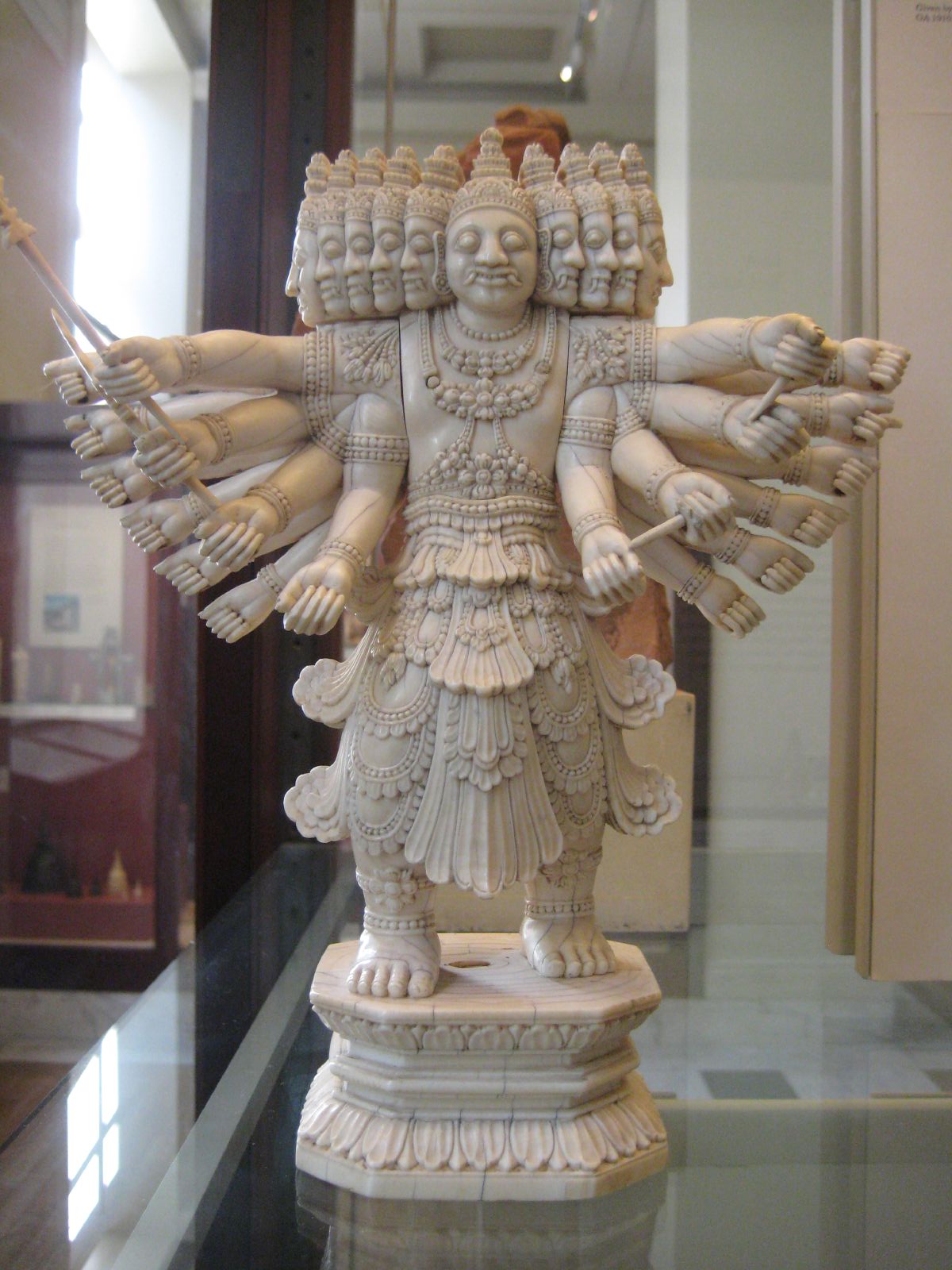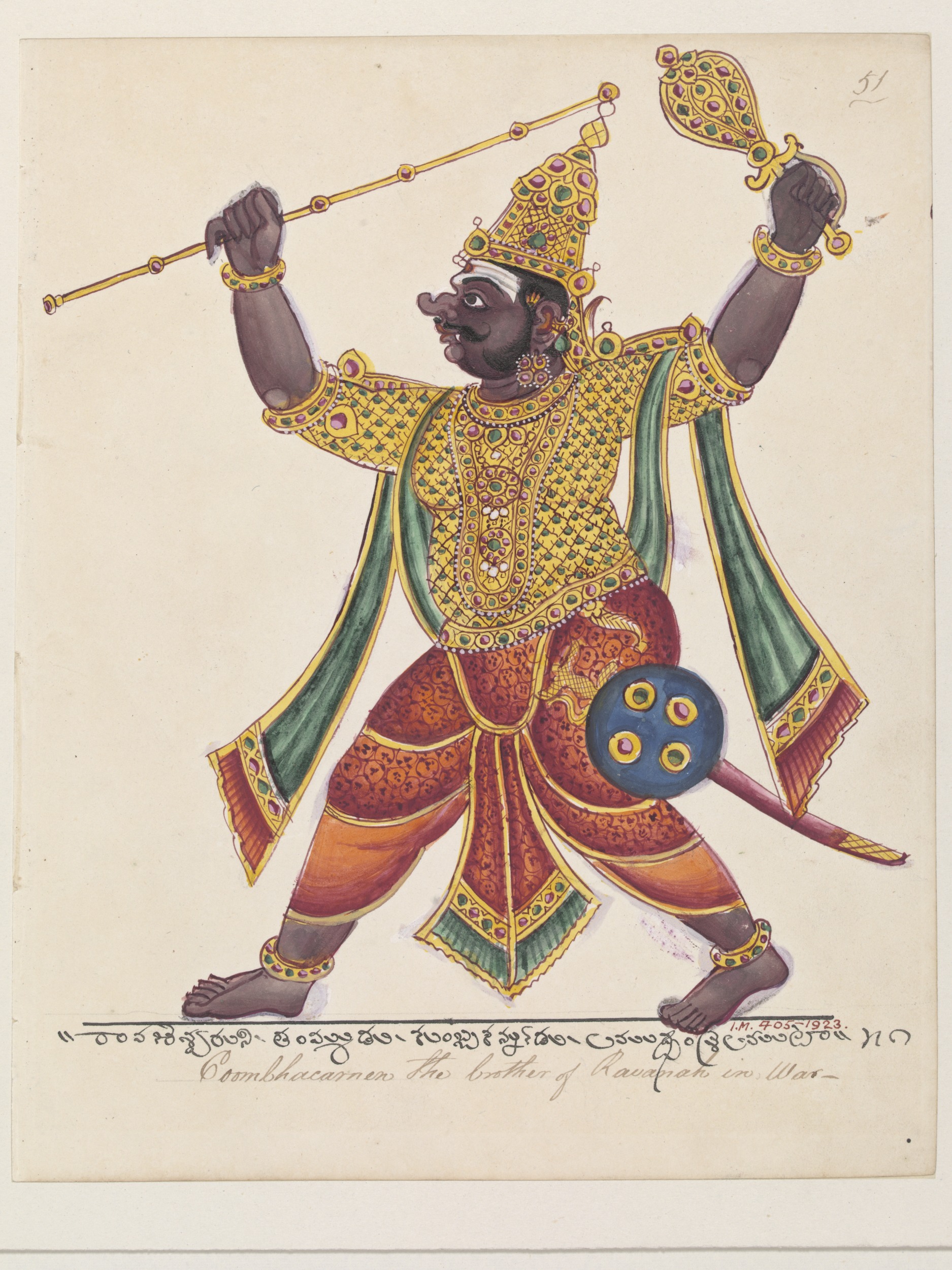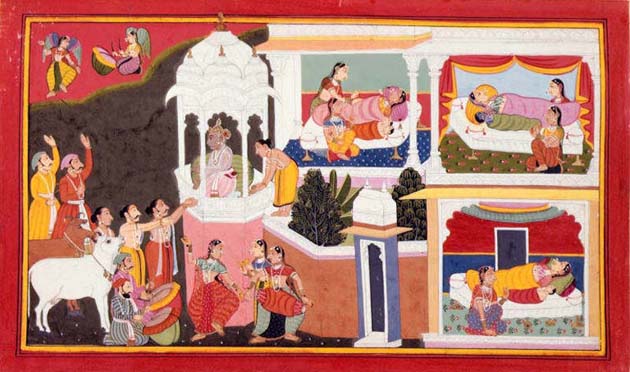|
Ahiravana
In some versions of the Ramayana such as the Krittivasi Ramayana, Ahiravan, also called Mahiravana, is a rakshasa (demon) ruler of Patala. He is variously described as either an ally or a brother of the rakshasa king Ravana. In Thai tradition, he is called Maiyarap. Ahiravan secretly carried away Rama and his brother Lakshmana to the nether-world, consulted his friends, and decided to sacrifice the life of the two divine brothers at the altar of his chosen deity, goddess Mahamaya. However, Hanuman saved their lives by decapitating Mahiravana, and destroying his army. Popular culture The ''Mairavan charitra'' was written in Telugu Telugu may refer to: * Telugu language, a major Dravidian language of India *Telugu people, an ethno-linguistic group of India * Telugu script, used to write the Telugu language ** Telugu (Unicode block), a block of Telugu characters in Unicode S ... in Kavya style in the 16th century by Adithya kavi. The story of Mahiravana was made into a Te ... [...More Info...] [...Related Items...] OR: [Wikipedia] [Google] [Baidu] |
Hanuman
Hanuman (; sa, हनुमान, ), also called Anjaneya (), is a Hindu god and a divine '' vanara'' companion of the god Rama. Hanuman is one of the central characters of the Hindu epic ''Ramayana''. He is an ardent devotee of Rama and one of the Chiranjivis. Hanuman is regarded to be the son of the wind-god Vayu, who in several stories played a direct role in Hanuman's birth, and considered to be an incarnation or son of Shiva in Shaivism. Hanuman is mentioned in several other texts, such as the epic ''Mahabharata'' and the various Puranas. Evidence of devotional worship to Hanuman is largely absent in these texts, as well as in most archeological sites. According to Philip Lutgendorf, an American Indologist, the theological significance of Hanuman and devotional dedication to him emerged about 1,000 years after the composition of the ''Ramayana'', in the 2nd millennium CE, after the arrival of Islamic rule in the Indian subcontinent.Paula Richman (2010), ''Revie ... [...More Info...] [...Related Items...] OR: [Wikipedia] [Google] [Baidu] |
Ravana
Ravana (; , , ) is a rakshasa king of the island of Lanka, and the chief antagonist of the Hindu epic ''Ramayana'' and its adaptations. In the ''Ramayana'', Ravana is described to be the eldest son of sage Vishrava and rakshasi Kaikesi. He abducted Prince Rama's wife Sita and took her to his kingdom of Lanka, where he held her in the Ashoka Vatika. Later, Rama, with the support of vanara King Sugriva and his army of vanaras, launched an invasion against Ravana in Lanka. Ravana was subsequently slain and Rama rescued his beloved wife Sita. Ravana is widely portrayed to be an evil character, though he also has many qualities that make him a learned scholar. He was well-versed in the six shastras and the four Vedas. Ravana is also considered to be the most revered devotee of Shiva. Images of Ravana are seen associated with Shiva at some temples. He also appears in the Buddhist Mahayana text '' Laṅkāvatāra Sūtra'', in Buddhist Ramayanas and Jatakas, as well as in ... [...More Info...] [...Related Items...] OR: [Wikipedia] [Google] [Baidu] |
Rakshasa
Rakshasas ( sa, राक्षस, IAST: : Pali: ''rakkhaso'') lit. 'preservers' are a race of usually malevolent demigods prominently featured in Hindu mythology. According to the Brahmanda Purana, the rakshasas were created by Brahma when he assumed a body of ''tamas'' (darkness), the beings springing forth and promising to protect the waters of creation. They are often depicted to be man-eaters (''nri-chakshas'', ''kravyads''), acting as embodiments of the powers of evil in the Vedic scriptures. They are offered a distinction from yakshas, their cousins who are depicted to be forces of destruction. The term is also used to describe asuras, a class of power-seeking beings that oppose the benevolent devas. They are often depicted as antagonists in Hindu scriptures, as well as in Buddhism and Jainism. The female form of rakshasa is rakshasi. Hinduism In Vedas The Hymn 87 of the tenth mandala of the '' Rigveda'' mentions about Rakshasas. They are classified amongs ... [...More Info...] [...Related Items...] OR: [Wikipedia] [Google] [Baidu] |
Patala
In Indian religions, Patala (Sanskrit: पाताल, IAST: pātāla, lit. ''that which is below the feet''), denotes the subterranean realms of the universe – which are located under the earthly dimension. Patala is often translated as underworld or netherworld. Patala is described as more beautiful than Svarga (subtle dimensions, loosely translated as heaven). Patala is described as filled with splendid jewels, beautiful groves and lakes. In Vajrayana Buddhism, caves inhabited by asuras are entrances to Patala; these asuras, particularly female asuras, are often "tamed" (converted to Buddhism) as dharmapala or dakinis by famous Buddhist figures such as Padmasambhava. In Hindu cosmology, the universe is divided into the three worlds: Svarga, Prithvi or Martya (earth/mortal plane) and Patala (gross dimensions, the underworld). Patala is composed of seven realms/dimensions or lokas, the seventh and lowest of them is also called Patala or Naga-loka, the region of the N ... [...More Info...] [...Related Items...] OR: [Wikipedia] [Google] [Baidu] |
Ramayana
The ''Rāmāyana'' (; sa, रामायणम्, ) is a Sanskrit epic composed over a period of nearly a millennium, with scholars' estimates for the earliest stage of the text ranging from the 8th to 4th centuries BCE, and later stages extending up to the 3rd century CE. ''Ramayana'' is one of the two important epics of Hinduism, the other being the ''Mahābhārata''. The epic, traditionally ascribed to the Maharishi Valmiki, narrates the life of Sita, the Princess of Janakpur, and Rama, a legendary prince of Ayodhya city in the kingdom of Kosala. The epic follows his fourteen-year exile to the forest urged by his father King Dasharatha, on the request of Rama's stepmother Kaikeyi; his travels across forests in the Indian subcontinent with his wife Sita and brother Lakshmana, the kidnapping of Sita by Ravana – the king of Lanka, that resulted in war; and Rama's eventual return to Ayodhya to be crowned king amidst jubilation and celebration. The ''Ramayana'' is ... [...More Info...] [...Related Items...] OR: [Wikipedia] [Google] [Baidu] |
Krittivasi Ramayan
''Kṛttivāsī Rāmāyaṇ'',, .; also called ''Śrīrām Pãcālī'',, . composed by the fifteenth-century Bengali poet Krittibas Ojha, from whom it takes its name, is a rendition of the ''Rāmāyaṇa'' into Bengali. Written in the traditional ''Rāmāyaṇa Pā̃cālī'' form of Middle Bengali literature, the ''Kṛttivāsī Rāmāyaṇ'' is not just a rewording of the original Indian epic, but also a vivid reflection of the society and culture of Bengal across the period of its circulation, from the Middle Ages into the modern period.Tapati Mukherjee, 'From Vālmikī to KRttivāsa; A Journey from Elitist to Popular Literature', in ''Critical Perspectives on the Rāmāyaṇa'', ed. by Jaydipsinh Dodiya (New Delhi: Sarup & Sons, 2001), pp. 45-51; . It was characterised by Dinesh Chandra Sen in 1911 as 'by far the most popular book in Bengal' and 'the Bible of the people of the Gangetic Valley'. Manuscripts and origins The ''Krittivas Ramayan'' appears to be a translation int ... [...More Info...] [...Related Items...] OR: [Wikipedia] [Google] [Baidu] |
Rakshasa
Rakshasas ( sa, राक्षस, IAST: : Pali: ''rakkhaso'') lit. 'preservers' are a race of usually malevolent demigods prominently featured in Hindu mythology. According to the Brahmanda Purana, the rakshasas were created by Brahma when he assumed a body of ''tamas'' (darkness), the beings springing forth and promising to protect the waters of creation. They are often depicted to be man-eaters (''nri-chakshas'', ''kravyads''), acting as embodiments of the powers of evil in the Vedic scriptures. They are offered a distinction from yakshas, their cousins who are depicted to be forces of destruction. The term is also used to describe asuras, a class of power-seeking beings that oppose the benevolent devas. They are often depicted as antagonists in Hindu scriptures, as well as in Buddhism and Jainism. The female form of rakshasa is rakshasi. Hinduism In Vedas The Hymn 87 of the tenth mandala of the '' Rigveda'' mentions about Rakshasas. They are classified amongs ... [...More Info...] [...Related Items...] OR: [Wikipedia] [Google] [Baidu] |
Rama
Rama (; ), Ram, Raman or Ramar, also known as Ramachandra (; , ), is a major deity in Hinduism. He is the seventh and one of the most popular ''avatars'' of Vishnu. In Rama-centric traditions of Hinduism, he is considered the Supreme Being. Rama is said to have been born to Kaushalya and Dasharatha in Ayodhya, the ruler of the Kingdom of Kosala. His siblings included Lakshmana, Bharata (Ramayana), Bharata, and Shatrughna. He married Sita. Though born in a royal family, their life is described in the Hindu texts as one challenged by unexpected changes such as an exile into impoverished and difficult circumstances, ethical questions and moral dilemmas. Of all their travails, the most notable is the kidnapping of Sita by demon-king Ravana, followed by the determined and epic efforts of Rama and Lakshmana to gain her freedom and destroy the evil Ravana against great odds. The entire life story of Rama, Sita and their companions allegorically discusses duties, rights and social ... [...More Info...] [...Related Items...] OR: [Wikipedia] [Google] [Baidu] |
Lakshmana
Lakshmana ( sa, लक्ष्मण, lit=the fortunate one, translit=Lakṣmaṇa), also spelled as Laxmana, is the younger brother of Rama and his loyalist in the Hindu epic ''Ramayana''. He bears the epithets of Saumitra () and Ramanuja (). He is the twin of Shatrughna. Legend Birth and marriage King Dasharatha of Ayodhya had three wives: Kausalya, Kaikeyi, and Sumitra. He performed a sacrifice to beget sons and as a result, his queens became pregnant. Lakshmana and his brother Shatrughna were born to Sumitra, while Rama and Bharata were born to Kausalya and Kaikeyi. In the Puranas, Lakshmana is described as an incarnation of Shesha, the multiple-headed naga (serpent) upon whom rests the preserver deity Vishnu, whose avatar Rama is considered to be. When sage Vishvamitra asked Rama to kill the demons in the forest, Lakshmana accompanied them and went to Mithila with them. Lakshmana was especially attached to Rama. When Rama married Sita, Lakshmana marr ... [...More Info...] [...Related Items...] OR: [Wikipedia] [Google] [Baidu] |
Telugu Language
Telugu (; , ) is a Dravidian language spoken by Telugu people predominantly living in the Indian states of Andhra Pradesh and Telangana, where it is also the official language. It is the most widely spoken member of the Dravidian language family and one of the twenty-two scheduled languages of the Republic of India. It is one of the few languages that has primary official status in more than one Indian state, alongside Hindi and Bengali. Telugu is one of six languages designated as a classical language (of India) by the Government of India. Telugu is also a linguistic minority in the states of Karnataka, Tamil Nadu, Maharashtra, Gujarat, Chhattisgarh, Orissa, West Bengal, and the union territories of Puducherry and Andaman and Nicobar Islands. It is also spoken by members of the Telugu diaspora spread across countries like United States, Australia, United Kingdom, Canada, New Zealand in the Anglosphere; Myanmar, Malaysian Telugu, Malaysia, Indian South Africans, ... [...More Info...] [...Related Items...] OR: [Wikipedia] [Google] [Baidu] |







